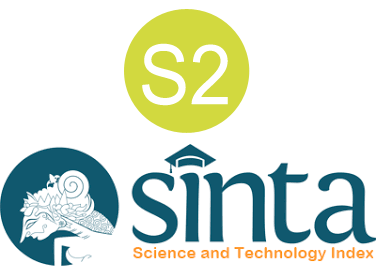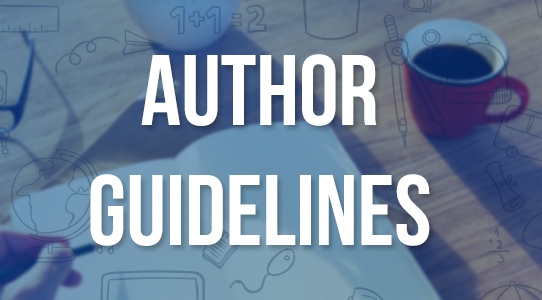Integration of Meaning Change Analysis in Language Education: A Pedagogical Approach to Improving Students' Critical Thinking Skills Through Comedy-Based Learning
DOI:
https://doi.org/10.37680/qalamuna.v17i1.7186Keywords:
Critical Literacy; Educational Comedy; Language Learning; Meaning Change; Semantic ApproachAbstract
This research aims to explore the integration of the analysis of meaning changes in language learning through comedy media as a contextual and reflective pedagogical approach. Using a mixed-methods design, the study involved 250 high school students from urban and rural backgrounds divided into experimental and control groups. Data were collected through linguistic corpus analysis (N > 10,000 units), pretest–posttest, in-depth interviews, and learning observations. Data analysis was performed quantitatively with paired t-tests, hierarchical regression, and qualitative thematic analysis using NVivo software. The results showed that students in the experimental group experienced a significant improvement in their ability to interpret contextual and metaphorical meanings (p < 0.001, d Cohen = 1.2). Visualizations such as heatmaps, word clouds, and semantic networks show that words such as body, bolt, and Jockey undergo complex expansion of meaning and can be read as representations of social change. These findings show that educational humor has strong potential as a language learning medium that builds critical literacy, broadens semantic insights, and enhances students' empathy for socio-cultural issues. This study concludes that comedy-based semantic approaches are effective for vocabulary mastery and relevant in shaping a generation of learners sensitive to the dynamics of language and meaning in social life.
References
Anyon, J. (2022). What “Counts” as educational policy? Notes toward a new paradigm. In Foundations of Education: Essential Texts and New Directions (pp. 73–92). Routledge. https://doi.org/10.4324/9781003340362-5
Archey, X. (2023). Language Ideology. In The Handbook of Dual Language Bilingual Education (pp. 290–304). Wiley Online Library. https://doi.org/10.4324/9781003269076-24
Arter, L. M. (2019). Linguistic Gymnastics: Humor and Wordplay in Children’s and Adolescent Literature. In Educating the Young Child (Vol. 15, pp. 169–183). Springer. https://doi.org/10.1007/978-3-030-15202-4_10
Azbary, H., Dehghani, M., Beelen, K., Arkut, A., Marx, M., & Kamps, J. (2017). Words are malleable: Computing semantic shifts in political and media discourse. International Conference on Information and Knowledge Management, Proceedings, Part F1318, 1509–1518. https://doi.org/10.1145/3132847.3132878
Babchuk, W. A. (2016). Review of Qualitative Research: A Guide to Design and Implementation (2016) by SB Merriam & EJ Tisdell.
Beckett, G. H., Beck, J., Lestari, F., Yang, J., & Jean Lim, H. (2025). Qualitative Research Synthesis of Project-Based (Language) Learning and Teaching in East and Southeast Asia: 2002–24. Language Teaching Research, 13621688251313744.
Berlant, L., & Ngai, S. (2017). Comedy has issues. In Critical Inquiry (Vol. 43, Issue 2, pp. 233–249). University of Chicago Press, Chicago, IL. https://doi.org/10.1086/689666
Berman, E. A. (2017). An Exploratory Sequential Mixed Methods Approach to Understanding Researchers’ Data Management Practices at UVM: Integrated Findings to Develop Research Data Services.
Boari, Y., Megavitry, R., Pattiasina, P. J., Ramdani, H. T., & Munandar, H. (2023). The Analysis of Effectiveness of Mobile Learning Media Usage in Training Students’ Critical Thinking Skills. MUDIR: Jurnal Manajemen Pendidikan, 5(1), 172–177.
Caldas-Coulthard, C. R. (2015). Discourse analysis. In Exploring Language and Linguistics (pp. 219–244). John Wiley & Sons. https://doi.org/10.1017/CBO9781139548922.010
Chattoo, C. B. (2019). A funny matter: Toward a framework for understanding the function of comedy in social change. Humor, 32(3), 499–523. https://doi.org/10.1515/humor-2018-0004
Chiaro, D. (2017). The language of jokes in the digital age: Viral humour. In The Language of Jokes in the Digital Age: Viral Humour. Taylor & Francis. https://doi.org/10.4324/9781315146348
Chovanec, J., & Tsakona, V. (2018). Investigating the dynamics of humor: Towards a theory of interactional humor. In The dynamics of interactional humor (Vol. 7, pp. 1–26). John Benjamins Publishing Company.
Chun, D., Smith, B., & Kern, R. (2016). Technology in Language Use, Language Teaching, and Language Learning. Modern Language Journal, 100(S1), 64–80. https://doi.org/10.1111/modl.12302
Davies, C. E. (2019). An autoethnographic approach to understanding identity construction through enacting a sense of humor as embodied practice. Journal of Pragmatics, 152, 200–215. https://doi.org/10.1016/j.pragma.2019.02.010
Dawadi, S., Shrestha, S., & Giri, R. A. (2021). Mixed-Methods Research: A Discussion on Its Types, Challenges, and Criticisms. Journal of Practical Studies in Education, 2(2), 25–36.
Diemer, M. A., Rapa, L. J., Voight, A. M., & McWhirter, E. H. (2016). Critical Consciousness: A Developmental Approach to Addressing Marginalization and Oppression. Child Development Perspectives, 10(4), 216–221. https://doi.org/10.1111/cdep.12193
Donato, R. (2016). Sociocultural theory and content-based foreign language instruction: Theoretical insights on the integration challenge. In Content-Based Foreign Language Teaching: Curriculum and Pedagogy for Developing Advanced Thinking and Literacy Skills (pp. 25–50). Routledge. https://doi.org/10.4324/9780203850497-8
Eckert, P. (2016). Variation, meaning, and social change. In Sociolinguistics (pp. 68–85). Cambridge University Press, Cambridge. https://doi.org/10.1017/cbo9781107449787.004
García, O. (2016). Critical Multilingual Language Awareness and Teacher Education. In Language Awareness and Multilingualism (Vol. 263, pp. 1–18). https://doi.org/10.1007/978-3-319-02325-0_30-2
Garcia, P. N. (2017). A sociocultural approach to analyzing L2 development in the Spanish L2 classroom. Vigo International Journal of Applied Linguistics, 14(14), 99–124.
Gibson, E., Futrell, R., Piandadosi, S. T., Dautriche, I., Mahowald, K., Bergen, L., & Levy, R. (2019). How Efficiency Shapes Human Language. In Trends in Cognitive Sciences (Vol. 23, Issue 5, pp. 389–407). Elsevier. https://doi.org/10.1016/j.tics.2019.02.003
Giulianelli, M., Del Tredici, M., & Fernández, R. (2020). Analysing lexical semantic change with contextualised word representations. Proceedings of the Association for Computational Linguistics Annual Meeting, 3960–3973. https://doi.org/10.18653/v1/2020.acl-main.365
González, R. D., & Melis, I. (2021). Language Ideologies. In Language Ideologies. Oxford University Press, Oxford. https://doi.org/10.4324/9781315045429
Jones, R. H. (2024). Discourse analysis: A resource book for students. Taylor & Francis.
Kivunja, C., & Kuyini, A. B. (2017). Understanding and Applying Research Paradigms in Educational Contexts. International Journal of Higher Education, 6(5), 26. https://doi.org/10.5430/ijhe.v6n5p26
Lantolf, J. P., Xi, J., & Minakova, V. (2021). Sociocultural theory and concept-based language instruction. Language Teaching, 54(3), 327–342. https://doi.org/10.1017/S0261444820000348
Laszlo, E. (2021). Introduction to systems philosophy: Toward a new paradigm of contemporary thought. In Introduction to Systems Philosophy: Toward a New Paradigm of Contemporary Thought. Routledge. https://doi.org/10.4324/9781003205586
Lockyer, D. (2018). Affixed interjections in English and Polish: A corpus-based study of emotional talk in digital communication and literary dialogue—University of British Columbia.
McDonald, V. M., Fingleton, J., Agusti, A., Hiles, S. A., Clark, V. L., Holland, A. E., Marks, G. B., Bardin, P. P., Beasley, R., Pavord, I. D., Wark, P. A. B., Gibson, P. G., Agusti, A., Anderson, G., Bardin, P. P., Cheng, A., Chung, L. P., Clark, V. L., Dabscheck, E., … Upham, J. (2019). Treatable traits: A new paradigm for 21st century management of chronic airway diseases: Treatable Traits down under International Workshop report. In European Respiratory Journal (Vol. 53, Issue 5). European Respiratory Society. https://doi.org/10.1183/13993003.02058-2018
Meyers, S., Rowell, K., Wells, M., & Smith, B. C. (2019). Teacher Empathy: A Model of Empathy for Teaching for Student Success. College Teaching, 67(3), 160–168. https://doi.org/10.1080/87567555.2019.1579699
Mooney, A., & Evans, B. (2023). Language, Society and Power: An Introduction, Sixth Edition. In Language, Society and Power: An Introduction, Sixth Edition. Routledge. https://doi.org/10.4324/9781003120957
Nasution, T., Afrianti, D., Tukiyo, T., Sulistyani, S., & Herman, H. (2022). Critical Discourse Analysis in the Classroom: A Critical Language Awareness on Early Children’s Critical Thinking. Jurnal Obsesi : Jurnal Pendidikan Anak Usia Dini, 6(5), 4992–5002. https://doi.org/10.31004/obsesi.v6i5.2951
Ohta, S. (2020). Why Only Us: Language and Evolution. In English Linguistics (Vol. 37, Issue 1, pp. 101–111). MIT Press. https://doi.org/10.9793/ELSJ.37.1_101
Palmer, D. K., Cervantes-Soon, C., & Dornier-Heiman, D. (2020). Bilingualism, biliteracy, biculturalism, and critical consciousness propose a fourth fundamental two-way dual language education goal. In Dual Language Education in the US: Rethinking Pedagogy, Curricula, and Teacher Education to Support Dual Language Learning for All (Vol. 58, Issue 2, pp. 34–50). Taylor & Francis.
Plano Clark, V. L. (2017). Mixed Methods Research. The Journal of Positive Psychology, 12(3), 305–306.
Reeping, D., Taylor, A. R., Knight, D. B., & Edwards, C. (2019). Mixed methods analysis strategies in program evaluation beyond “a little quant here, a little qual there.” Journal of Engineering Education, 108(2), 178–196. https://doi.org/10.1002/jee.20261
Rogers, R., Schaenen, I., Schott, C., O’Brien, K., Trigos-Carrillo, L., Starkey, K., & Chasteen, C. C. (2016). Critical Discourse Analysis in Education: A Review of the Literature, 2004 to 2012. Review of Educational Research, 86(4), 1192–1226. https://doi.org/10.3102/0034654316628993
Rucynski, J., & Prichard, C. (2020). Bridging the humor barrier : humor competency training in English language teaching. Rowman & Littlefield.
Tamariz, M., & Kirby, S. (2016). The cultural evolution of language. In Current Opinion in Psychology (Vol. 8, pp. 37–43). Elsevier. https://doi.org/10.1016/j.copsyc.2015.09.003
Thompson, J. B. (2023). Studies in the Theory of Ideology. In Studies in the Theory of Ideology. Univ of California Press. https://doi.org/10.5840/philstudies1991/19923352
van Hattum, F. (2019). Raciolinguistics: How Language Shapes Our Ideas About Race. Critical Inquiry in Language Studies, 16(4), 293–295. https://doi.org/10.1080/15427587.2018.1522864
Wuster, T. (2020). Reader in Comedy: An Anthology of Theory and Criticism. Studies in American Humor, 6(1), 205–207. https://doi.org/10.5325/studamerhumor.6.1.0205
Yu, Z., Guindani, M., Grieco, S. F., Chen, L., Holmes, T. C., & Xu, X. (2022). Beyond t-test and ANOVA: applications of mixed-effects models for more rigorous statistical analysis in neuroscience research. In Neuron (Vol. 110, Issue 1, pp. 21–35). Elsevier. https://doi.org/10.1016/j.neuron.2021.10.030
Zwiers, J., & Crawford, M. (2023). Academic Conversations: Classroom Talk That Fosters Critical Thinking and Content Understandings. In Academic Conversations: Classroom Talk That Fosters Critical Thinking and Content Understandings. Routledge. https://doi.org/10.4324/9781032680514
Downloads
Published
How to Cite
Issue
Section
License
Copyright (c) 2025 Umi Faizah, Tsalaatsa ‘Ashri Harsandi, Khabib Sholeh, Kadaryati Kadaryati, Bagiya Bagiya

This work is licensed under a Creative Commons Attribution-ShareAlike 4.0 International License.
Authors who submit manuscript retain its copyright and grant publisher right of first publication licensed under a Creative Commons Attribution-ShareAlike 4.0 International License (CC BY-SA 4.0) that allows others to access (search, read, download, and cite), share (copy and redistribute the material in any medium or format) and adapt (remix, transform, and build upon any material) the work for any lawful purpose, even commercially with an acknowledgement of the work's authorship and initial publication in Qalamuna: Jurnal Pendidikan, Sosial, dan Agama.











